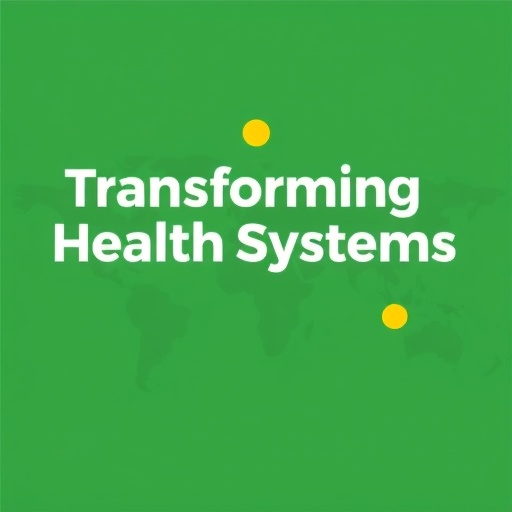
In the rapidly evolving world of biomedical engineering education, a transformative approach is being introduced to enhance the learning experience of students. The innovative concept of a “360° experience” is gaining traction, providing a holistic view of the multifaceted nature of biomedical engineering. This groundbreaking educational model focuses not only on traditional teaching methodologies but also integrates practical, real-world applications and interdisciplinary collaboration. The emphasis is on equipping students with both theoretical knowledge and hands-on experience, fostering a more comprehensive understanding of the field.
The 360° experience aims to bridge the gap between academia and industry, reflecting the multidisciplinary aspects of biomedical engineering. Students are exposed to a myriad of subjects ranging from biomechanics to medical imaging, and from biosensors to regenerative medicine. This broad spectrum of topics is crucial, as the field itself is interdisciplinary, requiring knowledge from various domains including biology, engineering, and technology. By engaging in diverse projects and collaborative learning, students cultivate a well-rounded skill set that prepares them for the challenges of the biomedical industry.
At the heart of this educational reform is an emphasis on experiential learning. Students are not merely passive recipients of information; they actively participate in hands-on projects that mimic real-life biomedical challenges. This includes working on case studies, engaging in laboratory experiments, and participating in simulations that familiarize them with the technologies they will encounter in the workforce. By tackling practical issues, students develop critical thinking and problem-solving skills, which are essential attributes in their future careers.
Moreover, the 360° experience encourages collaboration among students from different academic backgrounds. This interdisciplinary approach fosters an environment where engineering students can partner with those studying health sciences, business, and design. Collaborative projects cultivate teamwork skills and highlight the importance of communication in biomedical engineering, where diverse perspectives can lead to innovative solutions. By working together, students learn to navigate the complexities of multidisciplinary teams, a key aspect of modern biomedical engineering practice.
Incorporating technology into the curriculum is another pivotal aspect of the 360° experience. Advanced tools such as virtual reality (VR) and augmented reality (AR) are being integrated into the educational landscape, providing immersive scenarios that enhance the learning process. These technologies allow students to visualize complex biological systems and engineering concepts in an interactive manner. For instance, using VR simulations, students can explore human anatomy in 3D, providing a deeper understanding of physical structures and their functions. This tech-driven approach not only engages students but also prepares them for a workforce increasingly shaped by cutting-edge technology.
Additionally, the initiative promotes a continuous feedback loop where students can reflect on their learning experiences and receive guidance from faculty mentors. This feedback mechanism is vital in identifying areas of improvement and ensuring that students are on the right path towards mastering the competencies required in biomedical engineering. Faculty members play a crucial role in this dynamic, offering insights and support while also adapting the curriculum to meet the evolving needs of the industry.
As this educational paradigm continues to develop, it also emphasizes the importance of ethical considerations in biomedical engineering. Students are encouraged to think critically about the societal impacts of their work, addressing questions of safety, accessibility, and sustainability in the technologies they help develop. By embedding ethical discussions into the curriculum, educators are nurturing not only skilled engineers but also socially responsible practitioners who will contribute positively to society.
The response from students participating in this 360° experience has been overwhelmingly positive. Many report feeling more engaged and motivated, as the curriculum is designed to be relevant and applicable to their future careers. The blend of theoretical knowledge with practical application provides a sense of purpose, as students see the direct correlation between their studies and the real-world impact of biomedical engineering innovations.
Furthermore, this educational model aligns with the demands of the job market. Employers are increasingly seeking graduates who possess a broad skill set, including technical expertise, creative problem-solving abilities, and effective communication skills. The 360° experience prepares students to meet these expectations, ensuring that they are not only knowledgeable but also adaptable to the fast-paced changes characteristic of the biomedical field.
In conclusion, the 360° experience represents a significant advancement in biomedical engineering education. By merging theoretical study with practical application, interdisciplinary collaboration, and advanced technology, this innovative approach equips students with the skills and mindset needed to thrive in a complex and ever-evolving industry. As more institutions adopt this model, the future looks promising for biomedical engineering graduates, who will emerge not just as engineers, but as well-rounded professionals ready to tackle the challenges of tomorrow.
As biomedical engineering continues to evolve, so too must the educational frameworks that support it. The 360° experience provides a blueprint for a more effective and engaging learning environment, ultimately leading to better prepared graduates who are ready to make impactful contributions to the field. With ongoing support from educators, industry professionals, and technological advancements, the vision for a comprehensive and dynamic biomedical engineering education is becoming a reality.
Subject of Research: 360° experience in biomedical engineering education
Article Title: Coming Full Circle: The 360° Experience for Biomedical Engineering Technology Students
Article References:
Marhefka, J.N., Campbell, S., Kuntz, A. et al. Coming Full Circle: The 360° Experience for Biomedical Engineering Technology Students.
Biomed Eng Education 4, 433â436 (2024). https://doi.org/10.1007/s43683-024-00152-8
Image Credits: AI Generated
DOI: https://doi.org/10.1007/s43683-024-00152-8
Keywords: Biomedical engineering education, experiential learning, interdisciplinary collaboration, technology integration, ethical considerations, innovative curriculum
Tags: 360-degree educational experience in biomedical engineeringbridging academia and industry in biomedical fieldscomprehensive understanding of biomedical topicsexperiential learning methodologieshands-on learning in biomedical engineeringinnovative teaching strategies in engineeringinterdisciplinary collaboration in biomedical educationmultidisciplinary nature of biomedical engineeringpractical applications in biomedical engineeringpreparing students for biomedical industry challengesreal-world challenges in biomedical engineeringtransformative approaches in engineering education




